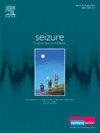Long-term seizure outcomes and the likelihood of antiseizure medication withdrawal in patients with juvenile absence epilepsy: A 10-year follow-up study
IF 2.8
3区 医学
Q2 CLINICAL NEUROLOGY
引用次数: 0
Abstract
Background and Objective
Juvenile absence epilepsy is a common idiopathic generalized epilepsy syndrome that often requires long-term antiseizure medications (ASMs). However, it remains unclear whether and when such long-term medication is necessary. In this study, we aimed to explore the long-term seizure outcomes and the feasibility of ASMs withdrawal in patients with JAE. Additionally, we aimed to investigate the evolution of EEG patterns over time.
Methods
We conducted a retrospective study on patients diagnosed with JAE according to the 2022 ILAE at Xijing Hospital between March 2014 and Dec 2024. We performed a retrospective review of their 24-h video-EEG recordings for seizure semiology and EEG pattern. Patient demographics, baseline clinical characteristics, and treatment details were extracted from clinical charts and electronic health records. All further follow-up visits were either through telemedicine or in-person visits.
Results
This retrospective study included 58 patients diagnosed with JAE, with a mean age at epilepsy onset of 11.86 ± 3.87 years. The median follow-up duration was 9.57 years (range, 3–27 years). Among these patients, 38 (65.5 %) achieved seizure freedom for at least 2 years. Treatment with valproate was identified as an independent predictor of a favorable outcome in terms of seizure freedom. Conversely, the total number of generalized tonic-clonic seizures experienced, presence of absence seizures on follow-up EEG and the persistence of hyperventilation positivity on EEG were associated with an unfavorable outcome regarding seizure freedom. Among the 38 patients, 25 (65.8 %) did not experience seizure recurrence. ASMs withdrawal was attempted in 28 patients (48.3 %) and 18 of them did not experience seizure recurrence during the tapering process. Among these 18 patients, ASMs were discontinued in 9 patients at the last follow-up.
The age of onset (p = 0.040) and age at last follow up (p = 0.044) were associated with seizure recurrence. After a median EEG follow-up period of 6 years, abnormal EEG improved in 34 of the 58 patients (58.6 %). Additionally, 14 of the 58 patients (24.1 %) had normal EEG in subsequent recordings.
Conclusion
Seizures were effectively controlled with ASMs in most patients with JAE, and a significant proportion of patients were able to attempt ASMs withdrawal without experiencing seizure recurrence. Additionally, EEG patterns of GSWD improved on follow-up EEGs for the majority of patients.
青少年缺失性癫痫患者的长期发作结局和停药可能性:一项10年随访研究
背景与目的青少年癫痫缺失是一种常见的特发性全身性癫痫综合征,通常需要长期抗癫痫药物治疗。然而,目前尚不清楚是否以及何时需要这种长期药物治疗。在这项研究中,我们的目的是探讨长期癫痫发作的结果和停药的可行性。此外,我们的目的是研究脑电图模式随时间的演变。方法回顾性研究2014年3月至2024年12月在西京医院根据2022 ILAE诊断为JAE的患者。我们对他们的24小时视频脑电图记录进行了回顾性审查,以了解癫痫的符号学和脑电图模式。从临床图表和电子健康记录中提取患者人口统计数据、基线临床特征和治疗细节。所有进一步的随访都是通过远程医疗或亲自就诊。结果本研究纳入了58例确诊为JAE的患者,平均癫痫发病年龄为11.86±3.87岁。中位随访时间为9.57年(范围3-27年)。其中38例(65.5%)癫痫发作至少2年无发作。丙戊酸治疗被认为是癫痫发作自由的独立预测因子。相反,全身性强直-阵挛性发作的总次数、随访脑电图上出现的失神性发作以及脑电图上持续的过度通气阳性与癫痫发作自由的不利结果相关。38例患者中,25例(65.8%)未发生癫痫复发。28例(48.3%)患者尝试停药,其中18例在逐渐减少的过程中没有癫痫复发。在这18例患者中,有9例患者在最后一次随访时停用了asm。发病年龄(p = 0.040)和最后随访年龄(p = 0.044)与癫痫复发相关。中位随访6年后,58例患者中有34例(58.6%)EEG异常改善。此外,58例患者中有14例(24.1%)在随后的记录中脑电图正常。结论绝大多数JAE患者的癫痫发作均能得到有效控制,且有相当比例的患者能够尝试停药而不复发。此外,GSWD的脑电图模式在大多数患者的随访脑电图中有所改善。
本文章由计算机程序翻译,如有差异,请以英文原文为准。
求助全文
约1分钟内获得全文
求助全文
来源期刊

Seizure-European Journal of Epilepsy
医学-临床神经学
CiteScore
5.60
自引率
6.70%
发文量
231
审稿时长
34 days
期刊介绍:
Seizure - European Journal of Epilepsy is an international journal owned by Epilepsy Action (the largest member led epilepsy organisation in the UK). It provides a forum for papers on all topics related to epilepsy and seizure disorders.
 求助内容:
求助内容: 应助结果提醒方式:
应助结果提醒方式:


